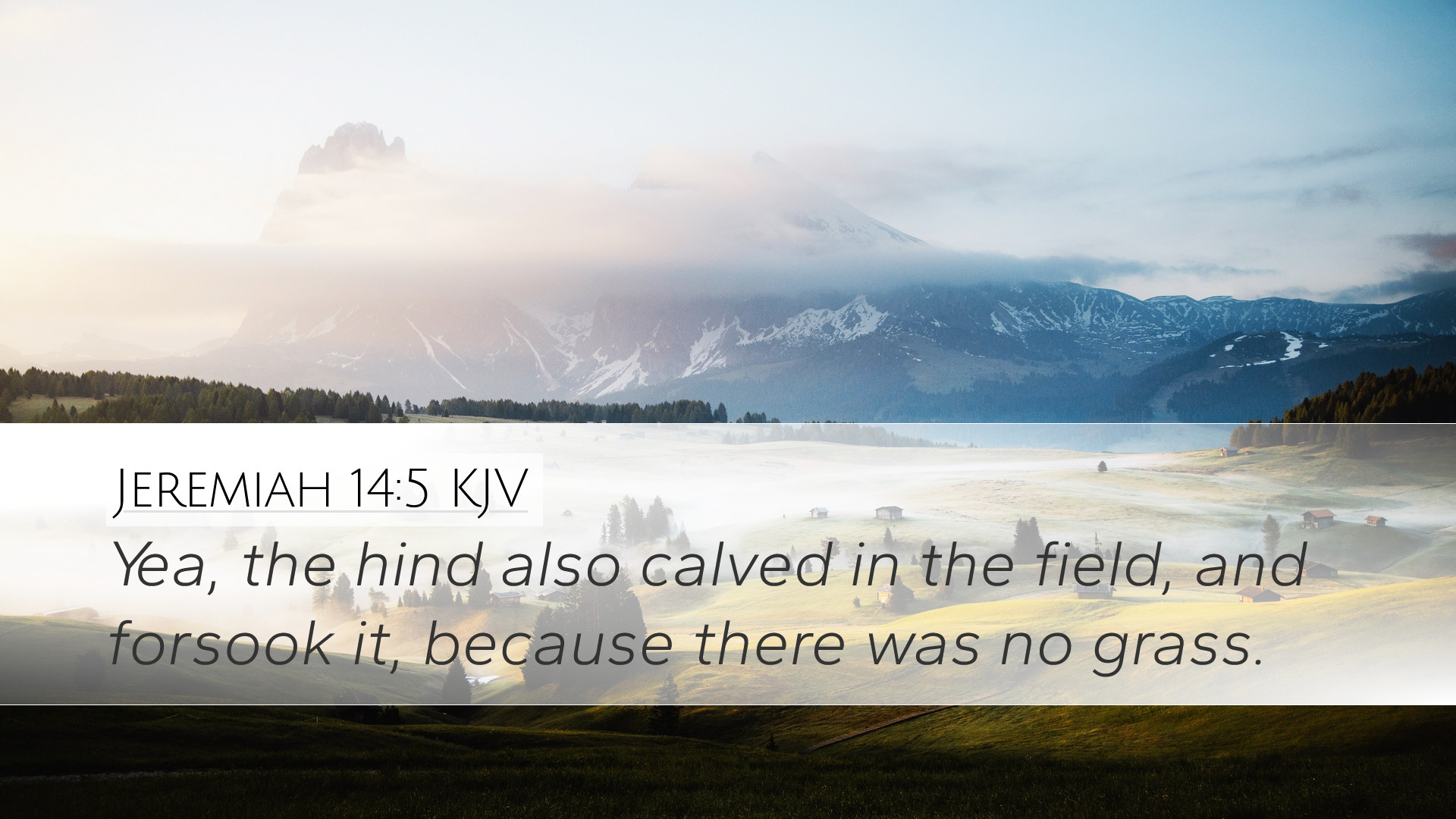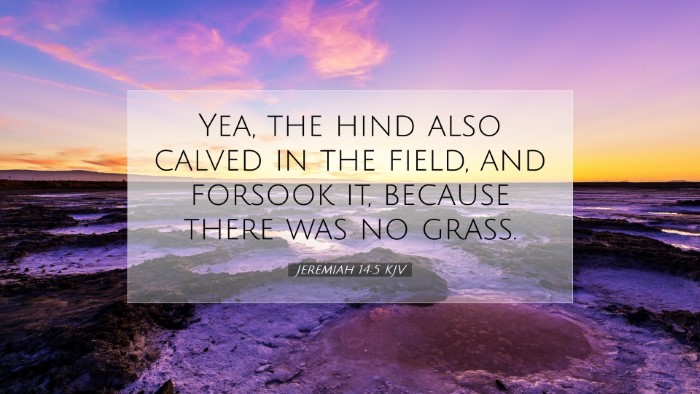Commentary on Jeremiah 14:5
Jeremiah 14:5 states, "Yea, the hind also calved in the field, and forsook it, because there was no grass." This verse captures a moment of intense desperation in both nature and society, reflecting the dire circumstances of Judah during Jeremiah's prophecy. The following commentary synthesizes insights from renowned public domain commentaries to explore the theological, historical, and practical aspects of this verse.
Historical Context
Jeremiah prophesied during a tumultuous period in Judah's history, marked by impending disaster due to the people's persistent idolatry and failure to heed God’s warnings. The nation faced severe drought, leading to famine and devastation. The mention of the hind (a female deer) abandoning her calf signifies not only the physical suffering of the animals but also serves as a metaphor for the greater abandonment of the land and its people by God due to their transgressions.
Theological Insights
-
The Consequences of Sin:
Albert Barnes points out that the abandonment of the calf by the hind symbolizes the effects of sin—it leads to abandonment and suffering. The natural world reflects the moral and spiritual decay of humanity. Just as the hind is driven to forsake her young, so too are the people of Judah facing divine withdrawal due to their disobedience.
-
The Image of Suffering Creation:
Matthew Henry illustrates the broader implications of creation suffering alongside humanity’s sin. The distress of the hind expresses the theme that all of creation groans under the weight of human sin (Romans 8:22). This points to God’s overarching sovereignty and the interconnectedness of both humans and nature, revealing how spiritual rebellion disrupts not just individuals but the entire created order.
-
Divine Judgment and Human Response:
Adam Clarke emphasizes the notion of divine judgment manifested through the natural calamities, reflecting how God uses creation as a tool to awaken humanity to their sins. This abandonment by nature forces the people of Jeremiah’s time to confront their own spiritual barrenness. The response should be one of repentance and seeking God’s mercy.
Practical Applications
-
Awareness of Spiritual Apathy:
Pastors and theologians can relate this verse to the current state of spiritual apathy in the church. Just as the hind could not find sustenance, many believers may find their spiritual lives barren. This passage calls for a revival of spiritual hunger and dependence on God, particularly in times of cultural decline.
-
Pursuit of Righteousness:
Students of the Bible should take heed of the dire consequences of turning away from God. This verse serves as a reminder that righteousness leads to peace and sustenance. Engaging with the Word and fostering a community focused on God’s grace can nurture the spiritual ecology of the church.
-
Creation Care:
The image of nature suffering due to human sin encourages a dialogue about creation care. The church is called to be stewards of God’s creation, recognizing that environmental degradation can be a form of the abandonment reflected in Jeremiah. Engaging with environmental issues as part of the church's mission may align with this text’s deeper implications.
Conclusion
Jeremiah 14:5 serves as a poignant reminder of the consequences of a broken relationship with God. Through the vivid imagery of nature’s sorrow, we are called to reflect on our own spiritual state and the broader themes of abandonment and judgment. The collective wisdom of Matthew Henry, Albert Barnes, and Adam Clarke provides a rich tapestry of understanding that is essential for pastors, students, and theologians alike. Ultimately, this discourse challenges the church to pursue spiritual renewal and remain steadfast in faith amidst adversity.


